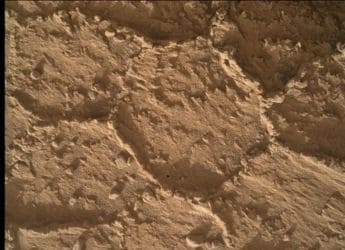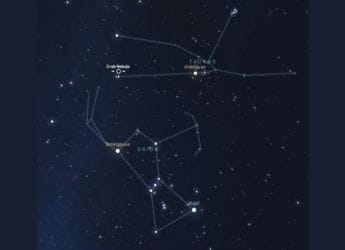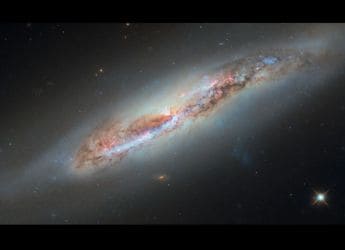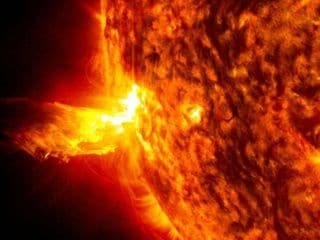- Home
- Science
- Science News
- The Moon is 4.47 Billion Years Old, Claim Scientists
The Moon is 4.47 Billion Years Old, Claim Scientists
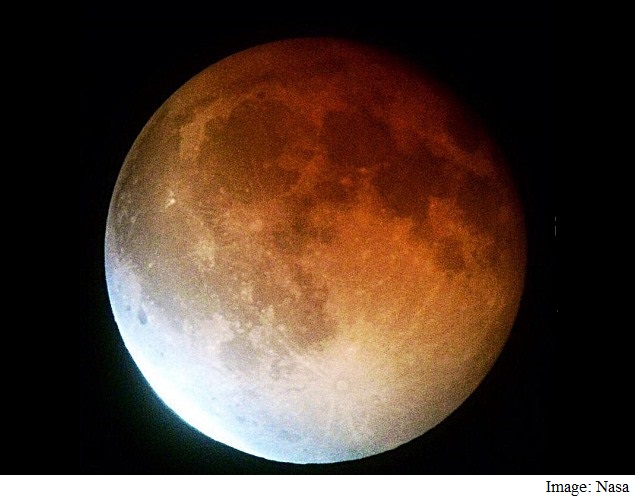
Analysis of meteorites that reached the Earth long after the cosmic collision which created the Moon indicate the satellite is 4.47 billion years old, according to an article published in the journal Science.
The article described the work of a multi-disciplinary team of specialists from Nasa, the University of Arizona and the Institute for the Science of Exploration Targets, or INET.
Scientists have long known that the Moon was formed as a result of a collision between a large proto-planet and the nascent Earth.
But the timing of that event remains a topic for debate, as scientists continue to argue over the age of lunar rocks and soil samples brought back to Earth by the Apollo astronauts.
The team behind the latest research determined that following the collision, kilometre-sized meteorites struck asteroids in the main asteroid belt - between the orbits of Mars and Jupiter - at higher than normal speeds.
Subsequent collisions brought fragments of those meteorites to Earth and those fragments have been dated to 4.47 billion years ago.
"This research is helping to refine our time scales for 'what happened when' on other worlds in the Solar System," INET principal investigator Bill Bottke said.
Get your daily dose of tech news, reviews, and insights, in under 80 characters on Gadgets 360 Turbo. Connect with fellow tech lovers on our Forum. Follow us on X, Facebook, WhatsApp, Threads and Google News for instant updates. Catch all the action on our YouTube channel.
Related Stories
- Samsung Galaxy Unpacked 2025
- ChatGPT
- Redmi Note 14 Pro+
- iPhone 16
- Apple Vision Pro
- Oneplus 12
- OnePlus Nord CE 3 Lite 5G
- iPhone 13
- Xiaomi 14 Pro
- Oppo Find N3
- Tecno Spark Go (2023)
- Realme V30
- Best Phones Under 25000
- Samsung Galaxy S24 Series
- Cryptocurrency
- iQoo 12
- Samsung Galaxy S24 Ultra
- Giottus
- Samsung Galaxy Z Flip 5
- Apple 'Scary Fast'
- Housefull 5
- GoPro Hero 12 Black Review
- Invincible Season 2
- JioGlass
- HD Ready TV
- Laptop Under 50000
- Smartwatch Under 10000
- Latest Mobile Phones
- Compare Phones
- OnePlus 15R
- Realme Narzo 90x 5G
- Realme Narzo 90 5G
- Vivo S50 Pro Mini
- Vivo S50
- OPPO Reno 15c
- Redmi Note 15 5G
- Redmi Note 15 Pro 5G
- Asus ProArt P16
- MacBook Pro 14-inch (M5, 2025)
- Infinix Xpad Edge
- OnePlus Pad Go 2
- OnePlus Watch Lite
- Just Corseca Skywatch Pro
- Acerpure Nitro Z Series 100-inch QLED TV
- Samsung 43 Inch LED Ultra HD (4K) Smart TV (UA43UE81AFULXL)
- Asus ROG Ally
- Nintendo Switch Lite
- Haier 1.6 Ton 5 Star Inverter Split AC (HSU19G-MZAID5BN-INV)
- Haier 1.6 Ton 5 Star Inverter Split AC (HSU19G-MZAIM5BN-INV)














